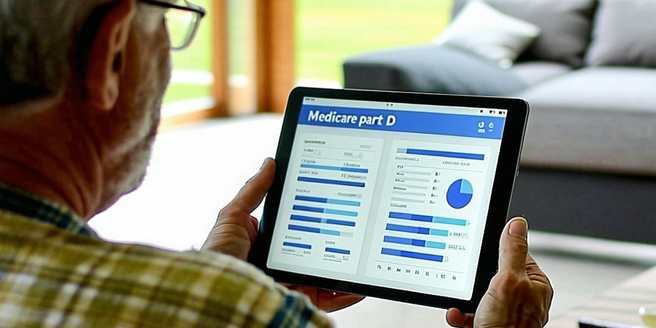
Understanding the Basics of Medicare Part D
Medicare Part D is a federal program that offers prescription drug coverage to Medicare beneficiaries. Established to help control medication costs, it allows beneficiaries to select from various private plans approved by Medicare. Each plan varies in terms of premiums, covered drugs, and pharmacies within their network, requiring beneficiaries to carefully evaluate options in their region. Importantly, Part D comes with an annual deductible, co-pays, and a coverage gap, known as the ‘donut hole,’ where beneficiaries may pay higher out-of-pocket costs until catastrophic coverage kicks in. Understanding these components is crucial for seniors to manage their medication expenses effectively and anticipate yearly cost adjustments. This program is essential for those who rely heavily on medications, ensuring they can maintain their health without financial strain.
Recent Changes in Coverage and Costs
In recent years, Medicare Part D has undergone significant changes impacting both coverage and costs. These changes include adjustments to the ‘donut hole,’ which aim to reduce the financial burden on beneficiaries. By 2020, a provision under the Affordable Care Act aimed to close this gap by lowering out-of-pocket costs for brand-name and generic drugs. In addition, annual premiums have seen fluctuations, with some plans experiencing higher than average increases. Beneficiaries also face changes in their formulary, as insurers may alter which drugs are covered each year. Keeping track of these modifications is critical for recipients to avoid unexpected expenses and ensure continual access to necessary medications. It’s essential for Medicare users to regularly review their plan options during the open enrollment period to optimize their coverage and minimize costs.
Implications for Prescription Drug Pricing
As Medicare Part D evolves, the changes have far-reaching implications for prescription drug pricing. With adjustments to formularies and efforts to close the ‘donut hole,’ there may be shifts in drug affordability for beneficiaries. Pharmaceutical companies face pressure to negotiate prices, potentially leading to lower costs for widely used medications. However, the introduction of new medications or changes in drug tiers could result in higher costs for some beneficiaries. The push for increased transparency in drug pricing also plays a part, as policy makers aim to reduce overall healthcare costs. Beneficiaries should remain vigilant, as their medication expenses could change with these revisions. It’s crucial for them to consult their healthcare providers and insurance plans to better understand how these pricing changes may affect their out-of-pocket costs.
How the Revisions Affect Beneficiaries
The revisions to Medicare Part D directly affect millions of beneficiaries by altering their prescription drug benefits. For instance, closing the ‘donut hole’ reduces out-of-pocket expenses, easing the financial load for those who rely on numerous medications. Changes in covered drugs and formulary tiers mean beneficiaries must stay informed about their plan’s details to ensure their required medications are accessible and affordable. Unfortunately, some may find their premiums or co-pays have increased, requiring them to budget accordingly. Additionally, protection against catastrophic spending is enhanced, safeguarding those with significant medication needs. Overall, these changes are designed to make drug costs more manageable, but they’re not without challenges, urging beneficiaries to remain proactive in reviewing their healthcare plans annually.
Steps to Adjust Your Plan for the New Changes
To align with the latest Medicare Part D revisions, beneficiaries should take several steps to adjust their plans effectively. First, review the Annual Notice of Change that outlines adjustments to premiums, drug coverage, and out-of-pocket expenses. Use this information to compare current plans against available alternatives during the open enrollment period. Tools like the Medicare Plan Finder can assist in evaluating which plans offer the best coverage and pricing for your specific needs. Consider consulting with a Medicare advisor for personalized guidance. Additionally, check for any changes to your medication list coverage, and discuss options with your healthcare providers if alternative treatments are necessary. Staying informed and proactive is crucial in ensuring your plan continues to meet your healthcare and financial needs amid these ongoing changes.
